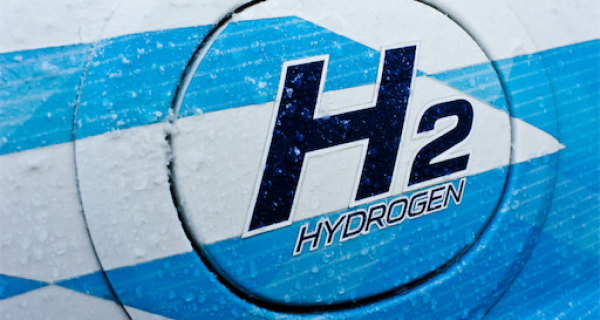In the general drive to decarbonise and with up to £500m promised in funding by the Prime Minister for a trialling the use of hydrogen in homes for heating and cooking, a hydrogen neighbourhood by 2023, a hydrogen village by 2025 and a hydrogen town before 2030, a green energy revolution appears to be around the corner.
But today, more than 30% of the largest public companies in the UK are currently responsible for carbon dioxide emissions at a level which is consistent with a global temperature increase of at least 2.7C by 2050, according to analysis recently published by Arabesque, the firm which provides climate data to investors.
As part of the 2015 Paris Climate deal, governments agreed to pursue efforts to limit warming to 1.5C above pre-industrial levels, this being the point at which scientists agreed there was a real danger of serious tipping points in the world’s climate leading to severe damage to human life and the environment. Clearly there is a great deal of room for improvement and further reductions of emissions.
Encouragingly, a further £240m was noted in the Prime Minister’s Ten Point Plan, for new hydrogen production facilities and £200m of new funding for carbon-capture clusters by the mid-2020’s. The numbers are perhaps less impressive than they might seem at first glance, but the fact remains that the shift to net zero is now enshrined in the political agenda.
A UK Hydrogen Strategy is set to be produced this year however which it is hoped will lend some of the necessary impetus in addressing the inherent challenges of large-scale adoption. The first step is to decarbonise the gas grid which will be achieved by using a 20% mix of hydrogen in the natural gas supply, this being the level at which conventional appliances such as boilers will still work efficiently.
Certainly, there is little doubt that momentum is gathering and for once there is a general consensus among political rivals, whether blue, red or green. Though when it comes to production, blue hydrogen is the colour of choice in the UK at least. And as the echoes of parliamentary rhetoric reach the ears of industry and beyond, the shift to hydrogen as part of the UKs decarbonisation drive might seem inevitable.
But it is not a given. It is at least a possibility, if not likely, that we will see new, alternative technologies challenge the use of hydrogen in certain sectors. What is certain however, is that we remain in the very earliest of stages of this journey and the adoption of hydrogen on a national or indeed any meaningful scale, remains many years distant.
It is no less important however, indeed it is now critical, that businesses plan for what remains a very likely shift and take the appropriate action during what would perhaps best be considered a period of transition. And for those that do, there are some significant savings to be made in the more immediate future.
If it seems strange that a large-scale switch to hydrogen is not more imminent, we must remember that while hydrogen has been produced in significant quantities for many years, 95% of global production is what is known as grey hydrogen. In other words, it has been produced using fossil fuels such as natural gas, in support of industrial processes related to fertiliser, steel production and within the petrochemical sector to aid the production of petroleum and diesel. The process is one which produces significant quantities of CO2. Adopting grey hydrogen is therefore far from being a green option.
So called green hydrogen, where the gas is extracted from water, is widely accepted as the most environmentally sustainable option, and one which countries such as Germany have invested heavily in. Production is not without its challenges however, the process being reliant on the development of electrolysers – a distant prospect on any kind of industrial scale, while the use of water as feedstock presents other challenges when considering production sites and the subsequent cost of transportation.
The UK is therefore an advocate for blue hydrogen, the process being similar to that used to produce grey hydrogen, but where the CO2 by-product is captured and stored to avoid its emission to atmosphere. Making use of proven technology that has been developed at scale, blue hydrogen offers the surest path to decarbonising.
It will also enable the switch to be made in those areas that electrification cannot support. Electric cars represent a cornerstone on the path to carbon neutrality, but the technology is simply not viable for other forms of commercial transport. Heavy haulage for instance, or shipping which uses huge quantities of oil, could operate effectively on hydrogen derived fuel. Here, and in other industries such as steel production where hydrogen could replace coke, it becomes the only real option to achieve neutrality.
For this to become a reality however, the current lack of incentive to develop the hydrogen sector must be addressed and while the regulatory environment to support hydrogen production is well advanced in countries like Germany and the Netherlands, it is distinctly lacking in the UK. The ideas and indeed the political will are there, but the reality at scale, is distant.
Meanwhile, for many large businesses across a variety of sectors from food and beverage to manufacturing, health care and data centres as well as other commercial sites, on site generation is an increasingly popular option and one which not only shields businesses from future energy price increases, but which provides a stepping-stone to a low carbon future.
Furthermore, it represents an extremely effective means of cutting current energy costs. The reality is that energy from the National Grid is forecast to become significantly more expensive, driven by a whole range of non-commodity charges. And these third-party charges are unavoidable unless a business can generate its own energy or significantly reduce consumption. The savings for businesses moving to on-site generation could be significant, in some cases six figure sums, and because sites where Ylem systems are installed remain connected to the National Grid, there is no risk of a loss of supply and no financial risk.
On-site natural gas fuelled generation can be supported by use of green gas certificates or off set with carbon credits, ensuring it is also an effective means of reducing overall carbon emissions and importantly, the technology is hydrogen ready. Many of Ylem’s customers are already using systems that are ready for the future introduction of hydrogen into the fuel mix, ready to support the UK’s legally binding targets for tackling climate change and decarbonising the grid.
For these businesses, there are additional opportunities too.
Ultimately the adoption of on-site generation and the savings it creates makes strategic investment in new technology to decarbonise further, increasingly viable. Indeed, rather than paying through unavoidable charges applied to energy bills for grid connected renewables, on-site generation creates an opportunity for businesses to invest in their own on-site renewables in the future, making effective use of solar energy and battery storage for instance.
And of course, all of this will underpin businesses’ increasingly important sustainability targets and form part of the journey which Ylem is taking its customers on towards a renewable and sustainable, hydrogen fuelled, carbon neutral future.






